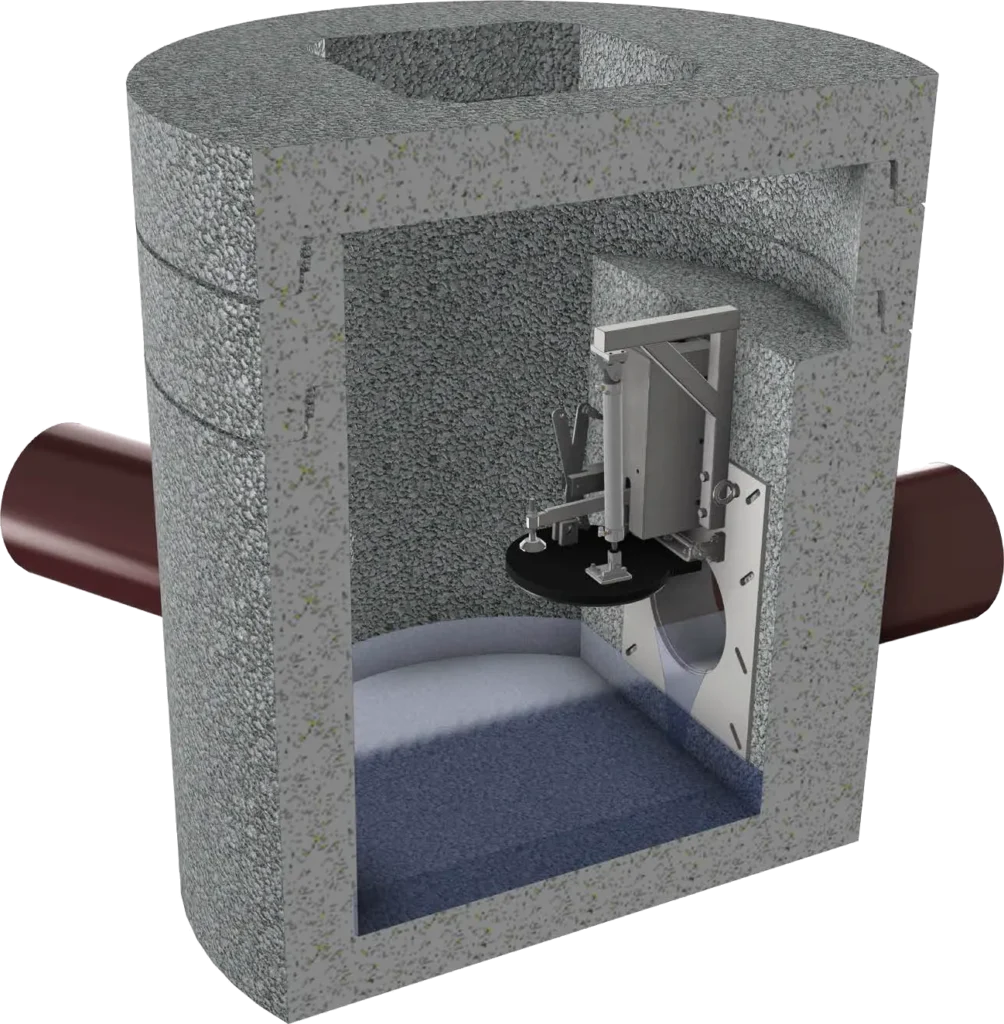The Next Generation in Water Pollution Containment
The ToggleBlok® Valve is a cutting-edge water pollution containment device designed to protect your site and the environment with maximum efficiency and minimum disruption.
Powered by solar energy and connected to the GSM (Global System for Mobile Communications) network, this smart valve offers automated and remote activation, ensuring a rapid response in an emergency. Its modular design makes it simple to retrofit into existing drainage systems, eliminating the need for costly and invasive civil works.
ToggleBlok® is a fully self-contained pollution containment solution that works independently to safeguard your site during spills, fires, or floods. If you’re looking for a better alternative to the Penstock Valve, this is it!
Once activated, the system seals your site within 10 seconds, stopping pollutants in their tracks. Even in extreme conditions, such as fire damage to the control panel, ToggleBlok® valves remain locked, providing uncompromising reliability.
The system’s intelligent connectivity allows for remote activation through a mobile phone, control panel, or automatically via linked devices like fire alarms or flood sensors. With ToggleBlok®, you gain peace of mind knowing your site is always prepared to prevent pollution incidents.
ToggleBlok® Chambers are now available with pre-installed ToggleBlok Valves which can be delivered directly to site.
The ToggleBlok® chambers simplify the installation process, eliminating the requirement for confined space working, speeding up the installation time and removing the requirement to co ordinating with different contractors.
Controls can be installed by a single person during final stages of construction programme. The valve will be installed in closed base chamber with the valves fitted to the inlet or outlet.
Plastic chambers and additional rings are also available.

ToggleBlok® valves are available in two configurations: on-seating and off-seating, designed to suit various applications:
The system is also highly effective in flood control, functioning as a remotely activated non-return valve that can be tested and maintained with ease. Unlike traditional passive valves or the Penstock Valve, ToggleBlok™ provides real-time feedback and performance when it matters most.
Get help with specifying the best pollution containment device for your application.
ToggleBlok® is a reliable solution for water pollution and flood containment, providing a range of features designed to minimise disruption and provide unmatched ease of use.
Here are a few reasons why ToggleBlok® is the ideal choice for your site:
From pollution control to flood prevention, ToggleBlok® is the ultimate solution for businesses looking to mitigate environmental risks. If spill containment and compliance are on your agenda, contact Sandfield Penstock Solutions at 01299 823158 or contact us.